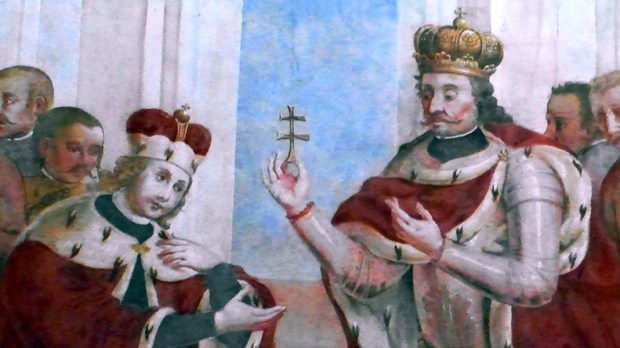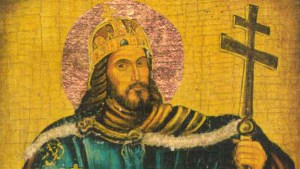Lenten Campaign 2025
This content is free of charge, as are all our articles.
Support us with a donation that is tax-deductible and enable us to continue to reach millions of readers.
Medieval kings wore crowns to represent their authority and often a crown would be used for many centuries to connect each king to the previous one.
This was the case in Hungary, where St. Stephen was the first in a long line of kings.
Eventually a crown was created that was named the “Crown of St. Stephen,” to honor the first king of Hungary.
Spiritual symbolism
Pope Benedict XVI wrote about the spiritual symbolism of the crown in a letter he sent to the ambassador of Hungary in 2010:
The Sacred Crown, an heirloom of King Stephen, by combining the circular corona graeca with the corona latina placed in an arch over it — both bear the face of Christ and are surmounted by the cross — already shows how East and West should sustain each other and enrich each other with their spiritual and cultural heritage and with the vigorous profession of faith. We can also see this as a leitmotiv for your country.
He exhorted the ambassador to not forget the example of St. Stephen and his example of faith:
The Catholic faith is undoubtedly one of the pillars of Hungary’s history. When in the distant year 1000 the young Hungarian Prince Stephen received the royal crown Pope Sylvester II sent to him, it came with the mandate to give faith in Jesus Christ room and a home in that land. The personal piety, the sense of justice and the human virtues of this great king are a lofty reference point that is both an incentive and an imperative, then as now, to those who are entrusted with a role of governance or similar responsibility. The State is certainly not expected to impose a specific religion; rather, it should guarantee the freedom to profess and practice the faith.
St. Stephen provided a strong foundation of faith for Hungary, and it is hoped that her people will continue to cling to this beautiful heritage of their ancestors.



